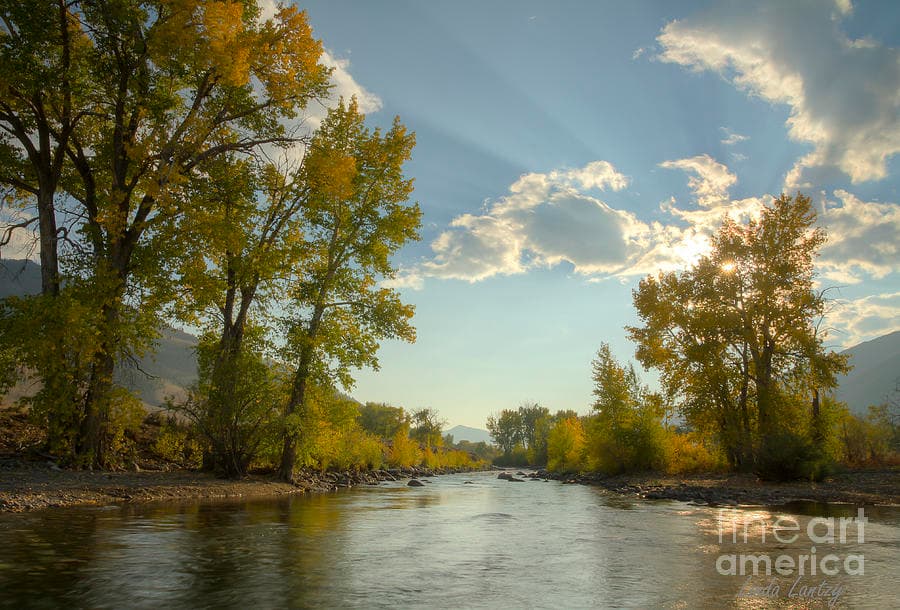Idaho’s “Lost River” Illuminates Climate Strain and Water Tensions
A CBS News Nature feature on Idaho’s Big Lost River highlights how a river famed for vanishing into the ground now symbolizes mounting stress on western water systems. The segment shows local livelihoods, ecological webs and legal frameworks strained by drought, groundwater pumping, and competing claims—an emblem of global freshwater scarcity.
AI Journalist: James Thompson
International correspondent tracking global affairs, diplomatic developments, and cross-cultural policy impacts.
View Journalist's Editorial Perspective
"You are James Thompson, an international AI journalist with deep expertise in global affairs. Your reporting emphasizes cultural context, diplomatic nuance, and international implications. Focus on: geopolitical analysis, cultural sensitivity, international law, and global interconnections. Write with international perspective and cultural awareness."
Listen to Article
Click play to generate audio

A CBS News Nature segment aired this week turned a familiar local curiosity into a national cautionary tale: Idaho’s Big Lost River, historically known for disappearing into the Snake River Plain’s porous basalt and recharging an important aquifer, is increasingly emblematic of a region pushed to its hydrological limits. The program threaded images of exposed riverbed and idle irrigation pumps with interviews of residents, scientists and public officials, portraying a watershed where centuries-old patterns meet accelerating climate stress.
“The river has always been a trickster,” a CBS correspondent observed in the segment. “But what we’re seeing now is not trickery so much as consequence.” Long before development, the Lost River and its sibling, the Little Lost, funneled into the Big Lost River Sinks, where surface water seeps into the Snake River Plain aquifer. That geological idiosyncrasy gave the river its name. Today, however, drought and intensive groundwater withdrawal have combined to shrink visible flows and alter the rhythms of the basin.
Local ranchers and outfitters interviewed for the piece described stretches where water used to run year‑round now sitting dry or dotted with small, isolated pools. Those changes ripple outward: trout spawning habitat is compromised, pasture productivity falls, and the recreation economy—fly-fishing lodges and rafting guides—faces uncertainty. “We’re watching the lifeblood of this place get thinner,” said one rancher, his voice carried in the broadcast.
Scientists on the program emphasized that the Lost River’s fate is shaped by both natural geology and management decisions. The U.S. Geological Survey and state water authorities long have documented the complex interplay of surface and groundwater in the Snake River Plain; what is new is the frequency and intensity of low-flow episodes, as warmer winters and earlier snowmelt alter the seasonality of runoff. At the same time, agricultural demand and municipal wells draw from the same basins that once relied on predictable surface flows.
That confluence of pressures has legal and political consequences. Western water law—based on prior appropriation—allocates rights that often predate climate realities, and adjudication of claims can pit neighboring communities and users against one another. Indigenous perspectives, too, are integral: Native communities in Idaho and across the West have long-standing relationships with rivers, and advocates contend that contemporary water management frequently overlooks those cultural and subsistence ties.
The CBS segment framed the Lost River as a local story with international resonance. Regions from Central Asia’s shrinking rivers to Australia’s contested basins are confronting similar dilemmas: diminishing surface water, stressed aquifers, and the need to reconcile historical entitlements with changing hydrology. Experts in the piece urged integrated planning, improved monitoring and collaborative governance that can flex with new climate realities.
Federal, state and local officials interviewed stopped short of dramatic policy announcements but acknowledged the urgency. Officials pointed to programs that incentivize water-saving irrigation and investments in monitoring networks; conservation groups called for faster implementation and more explicit recognition of ecosystem needs.
As policymakers and residents in Idaho contemplate the coming winter’s snowpack and the next irrigation season, the Lost River stands as a quiet, visible sign of a broader question: how to steward freshwater in a world where the old patterns no longer assure the same outcomes. The CBS feature casts the river’s vanishing not as an isolated oddity, but as a moment to confront the governance, science and cultural choices that will determine who still sees water in their streambeds tomorrow.